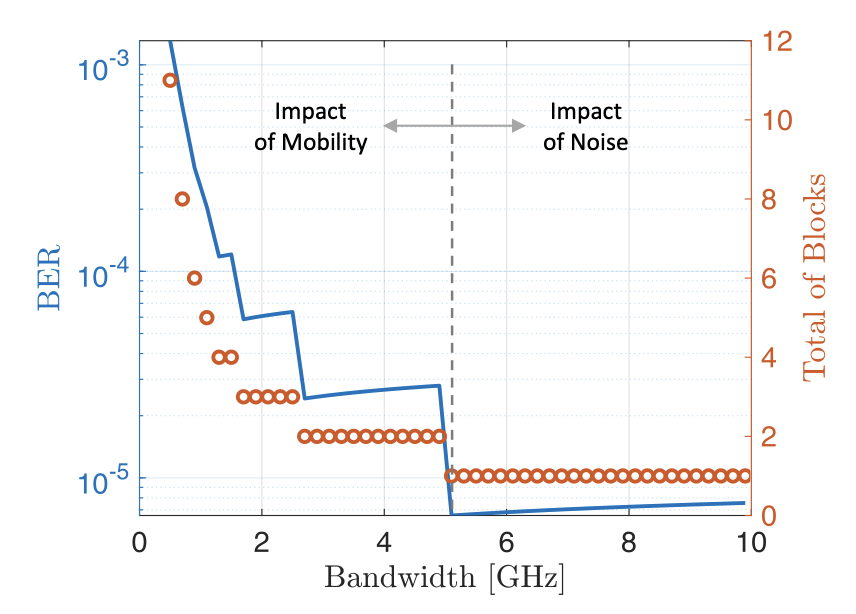Literature Database Entry
memedi2023vehicular
Agon Memedi, "Vehicular Visible Light Communications for Connected Autonomous Driving," PhD Thesis, School of Electrical Engineering and Computer Science (EECS), TU Berlin (TUB), April 2023. (Advisor: Falko Dressler; Referees: Falko Dressler, Hsin-Mu Tsai, Renato Lo Cigno and Volker Jungnickel)
Abstract
Vehicular Visible Light Communication (V-VLC) has recently emerged as a promising technology for vehicular networking. This technology is based on the concept of using LEDs in modern cars’ lighting modules for communication while preserving their illumination functionality. V-VLC has certain characteristics that can complement well RF technologies. The Line Of Sight (LOS) characteristics of VLC, the directionality of the light waves, and the confined collision domain can substantially reduce interference and improve resilience against security attacks on communication. Therefore, combining radio communications with V-VLC can provide reliable communication, as required by various vehicular networking applications. As a new technology, however, V-VLC requires further fundamental research, e.g., on the impact of automotive lighting modules on communication, multi-user interference, and medium access. To that end, in the first part of this thesis, we focus on understanding the characteristics of head- and taillights as V-VLC transmitters. We develop empirical modeling methodologies and describe the validation process based on real-world measurements. Then, we show that the V-VLC link stability is greatly impacted by the road geometry (straight and curved roads) and the cars’ arrangement thereon. Additionally, we show that differences in headlights based on vehicle type, model, and lighting function (low beam or high beam) impact communication, despite adhering to the same illumination standards. In the second part of this thesis, we study medium access and address the problem of multi-user interference in V-VLC. We characterize V-VLC interference in a large-scale urban scenario and show that despite the directionality of VLC, multi-user interference presents a challenge in certain situations. To address this challenge, we design a medium access protocol that uses lighting modules as sector antennas. Using the vehicles’ positions and beamforming for transmission, we are able to effectively reduce interference. We improve communication by halving the ratio of collisions and increasing the packet delivery ratio.
Quick access
Contact
BibTeX reference
@phdthesis{memedi2023vehicular,
author = {Memedi, Agon},
title = {{Vehicular Visible Light Communications for Connected Autonomous Driving}},
advisor = {Dressler, Falko},
institution = {School of Electrical Engineering and Computer Science (EECS)},
location = {Berlin, Germany},
month = {4},
referee = {Dressler, Falko and Tsai, Hsin-Mu and Lo Cigno, Renato and Jungnickel, Volker},
school = {TU Berlin (TUB)},
type = {PhD Thesis},
year = {2023},
}
Copyright notice
Links to final or draft versions of papers are presented here to ensure timely dissemination of scholarly and technical work. Copyright and all rights therein are retained by authors or by other copyright holders. All persons copying this information are expected to adhere to the terms and constraints invoked by each author's copyright. In most cases, these works may not be reposted or distributed for commercial purposes without the explicit permission of the copyright holder.
The following applies to all papers listed above that have IEEE copyrights: Personal use of this material is permitted. However, permission to reprint/republish this material for advertising or promotional purposes or for creating new collective works for resale or redistribution to servers or lists, or to reuse any copyrighted component of this work in other works must be obtained from the IEEE.
The following applies to all papers listed above that are in submission to IEEE conference/workshop proceedings or journals: This work has been submitted to the IEEE for possible publication. Copyright may be transferred without notice, after which this version may no longer be accessible.
The following applies to all papers listed above that have ACM copyrights: ACM COPYRIGHT NOTICE. Permission to make digital or hard copies of part or all of this work for personal or classroom use is granted without fee provided that copies are not made or distributed for profit or commercial advantage and that copies bear this notice and the full citation on the first page. Copyrights for components of this work owned by others than ACM must be honored. Abstracting with credit is permitted. To copy otherwise, to republish, to post on servers, or to redistribute to lists, requires prior specific permission and/or a fee. Request permissions from Publications Dept., ACM, Inc., fax +1 (212) 869-0481, or permissions@acm.org.
The following applies to all SpringerLink papers listed above that have Springer Science+Business Media copyrights: The original publication is available at www.springerlink.com.
This page was automatically generated using BibDB and bib2web.

